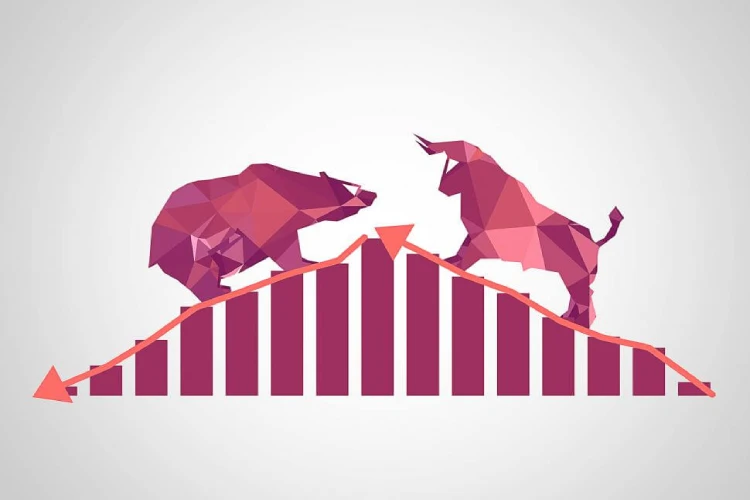If you’ve ever watched the news, you’ve likely heard about the VIX, or the volatility index. Also known as Wall Street’s fear gauge, it’s a measure of the market’s blood pressure - indicating how scared, anxious, nervous, and uncertain investors are feeling. Essentially, the VIX lets us know what the risk, fear, and level of stress is in the marketplace at any given time.
While it may seem like measuring something as intangible as volatility would be impossible, the VIX is a unique tool that allows us to quantify market turbulence and sentiment. When investors are feeling uncertain about what’s going on in the world, the VIX goes up - and when they’re feeling more confident, it goes down.
So why does this matter? Understanding how investors are feeling about the market can give us insight into how it may move. For example, if the VIX is high, it’s likely that investors are feeling particularly fearful and may be selling off their stocks. On the other hand, if the VIX is low, investors are likely feeling more confident and may be buying more.
What is Market Volatility
Volatility in the stock market can be a scary thing, especially for investors. But did you know that there’s a way to measure just how volatile the market is? Enter the VIX index. This index is a measure of the amount of fluctuation in the U.S. stock market’s price movements that go above normal variance.
So, why was the VIX created in the first place? It was developed to measure institutional investors or big investors’ hedging behaviors. By watching if they were hedging that the market was going to go down, market analysts could tell if there was fear in the marketplace.
When the VIX was introduced in 1993, it had a different methodology based on the S&P 100. But in 2003, the CBOE updated the VIX to be based on the S&P 500. Because the S&P 500 is a measure of the broad market, the VIX became a reliable measure of volatility in the broad U.S. stock market.
It’s interesting to note that there’s an inverse relationship between the activity happening in the major index, the S&P 500, and what’s going on in the base. This means that generally, when one is up, the other is down. Keeping an eye on the VIX index can provide investors with valuable insight into market fear and volatility. Stay informed, and invest wisely.
What is the VIX
The VIX is a forward-looking index that measures implied volatility. What does that mean? It gives us an instant idea of how much the market expects the S&P 500 index to fluctuate within the next 30 days. It measures how uncertain investors are feeling about the stock market.
So what causes movements in the VIX? Major events. Negative news can make people feel uneasy, hence why the VIX is often called the Fear Index. When the VIX is high, traders tend to move their assets out of riskier investments and into safer ones. Keeping an eye on the VIX can be an effective way to gauge market sentiment and make informed trading decisions.
The VIX spikes
The VIX is a measure of volatility in the U.S. stock market, and it tends to spike when there is fear or uncertainty in the marketplace. For example, the VIX reached record levels in March 2020 when the pandemic hit, and it spiked again in October of that year when infections increased, and stimulus negotiations stalled. More recently, in February 2022, the VIX spiked again when Russia invaded Ukraine. In general, uncertainty is a major factor that contributes to VIX volatility.
How the VIX works
It all comes down to a complex mathematical equation that tracks trading in S&P 500 options. The VIX measures implied volatility over the next 30 days, and that data is derived from option activity.
Essentially, the options market is a bit like a game of predicting the future. Investors buy options contracts, which are tethered to the stock market, to hedge against a potential downturn. For example, if an event happens in the world that suggests the overall economy won’t be positive in the next 30 days, investors will buy options contracts betting that the market will go down.
So, how does this work in practice? Let’s say something happens in the world, like the Fed’s uncertainty or Russia invading Ukraine, and investors believe that the overall economy won’t be more positive in 30 days. The options contracts they’re buying are really a bet on the market going down. It can get far more complicated from here, but essentially, it’s a hedging opportunity.
The VIX index is a measurement of volatility in the stock market. It follows the trades made by investors using options contracts to bet on whether a price will go up or down. Think of it like a rollercoaster: when stocks sell off, investors may buy options to protect their investments. These protective purchases, or options, send the VIX higher.
The VIX measures the degree of price movements, with larger price movements indicating higher volatility. A VIX reading over 30 is considered relatively large volatility, while a VIX below 20 indicates that the market is rather complacent, and there’s not much concern for any near-term volatility or events that could spark a drawdown.
How the VIX works: A look at investors and traders
The VIX is often viewed as a predictor of volatility in the stock market. However, it’s important to remember that the data used to make predictions is based on today’s input, which might not be indicative of what will happen in the future.
Despite this, investors can still use the VIX as a tool to make informed investment decisions or invest in it indirectly. For instance, the VIX can give a reliable measure of market risk or stress, which can be critical information for making investment decisions.
Volatility in the stock market can be alarming, but it can also be a signal to take a closer look at some high conviction names on our list. However, volatility can be caused by a variety of reasons, such as headline news or risks, and some may only be short-term. Still, understanding volatility can give insight into potential price movements over the next 30 days.
Interestingly, investors can also invest in volatility through ETFs, which have a negative correlation with stock prices. When building an overall portfolio, sometimes it’s necessary for certain assets to move differently than others. This is where asset allocation comes in.
Asset allocation means dividing investments across different asset classes, such as stocks, bonds, and commodities, to achieve a balance between risk and return. By investing in a variety of assets, you can diversify your portfolio and manage risk. So, understanding volatility can not only give insight into potential price movements but also aid in asset allocation decisions. Keep an eye on the VIX and invest smartly.
Investing can be intimidating and confusing for beginners, but with the right knowledge and strategy, it can be a great way to grow your wealth. A well-diversified portfolio is key to successful investing, and just like a chef needs different ingredients to create a delicious meal, an investor needs different asset classes to create a robust portfolio.
When you have different elements in your portfolio, they can do different things and support each other. For instance, when one asset is up, another might be down, providing a hedge against the S&P 500. The VIX, or the CBOE Volatility Index, can also be used as a short-term tactical trade idea or as a key determinant of when to switch different asset classes or parts of the market you want to be invested in. But the most important thing when investing is to have a sound plan, regardless of whether you are a trader or long-term investor. If you are investing for something 20 or 30 years down the road, it’s crucial to have a plan that will guide your decisions and keep you on track.

 Why Is The Rolls Royce So Expensive
Why Is The Rolls Royce So Expensive